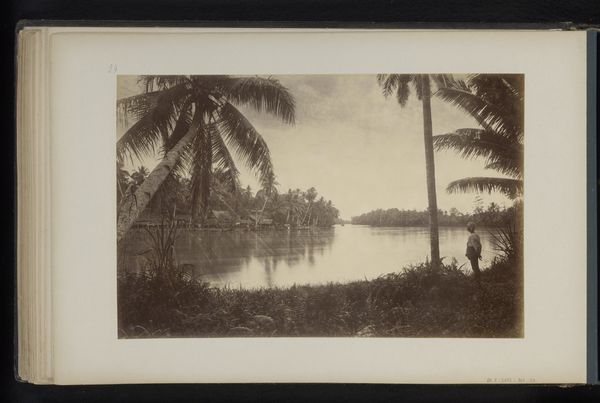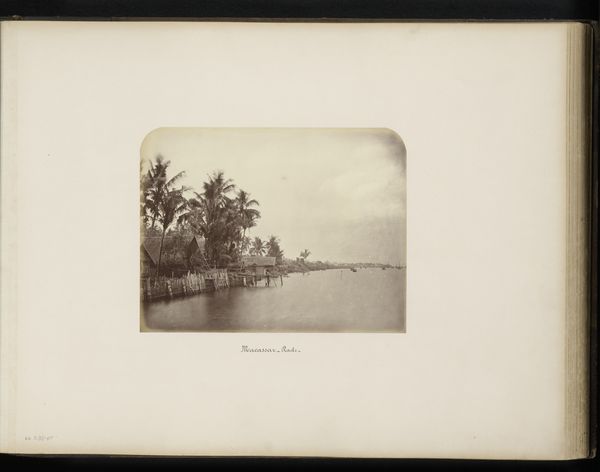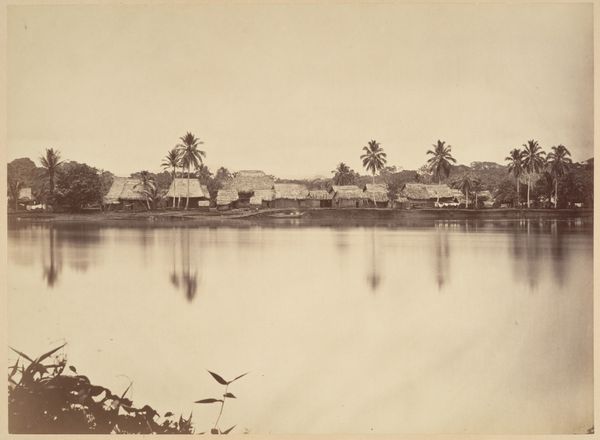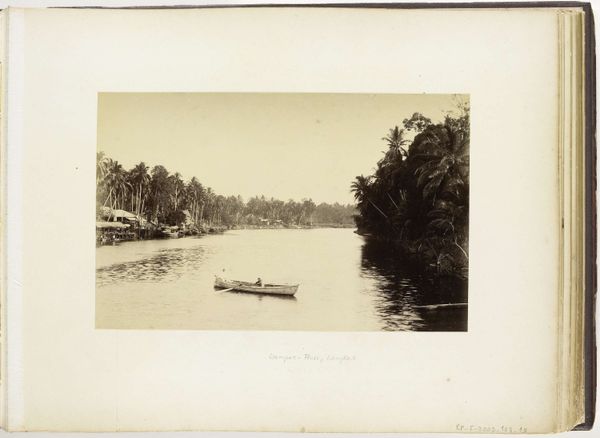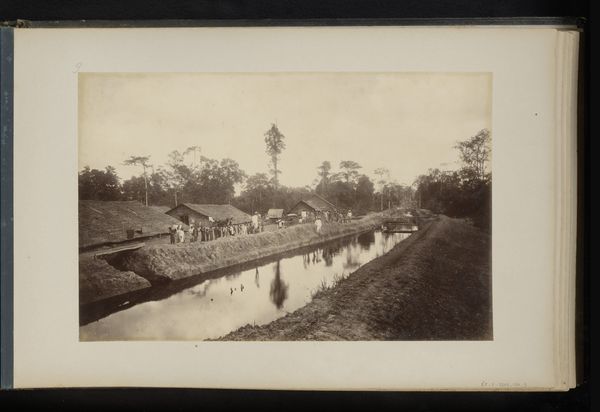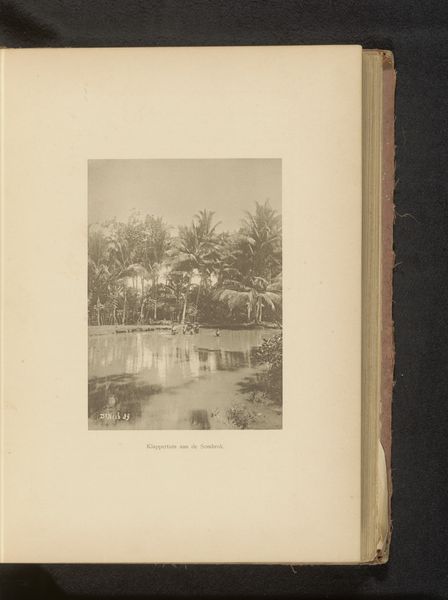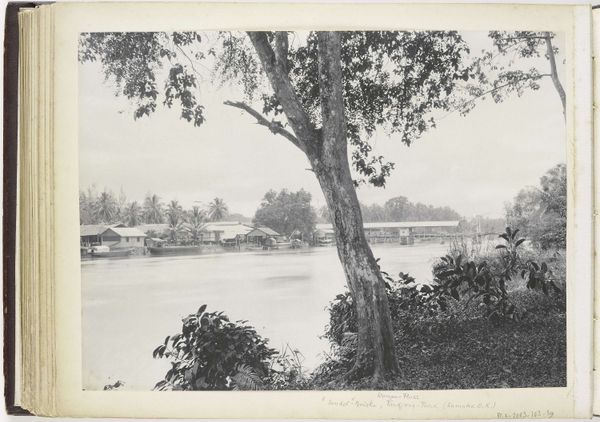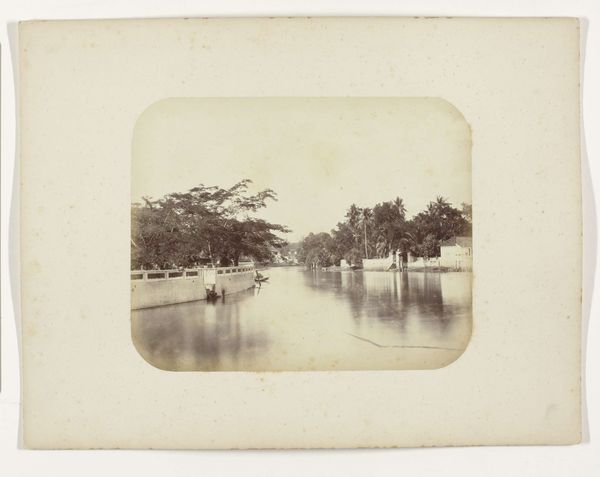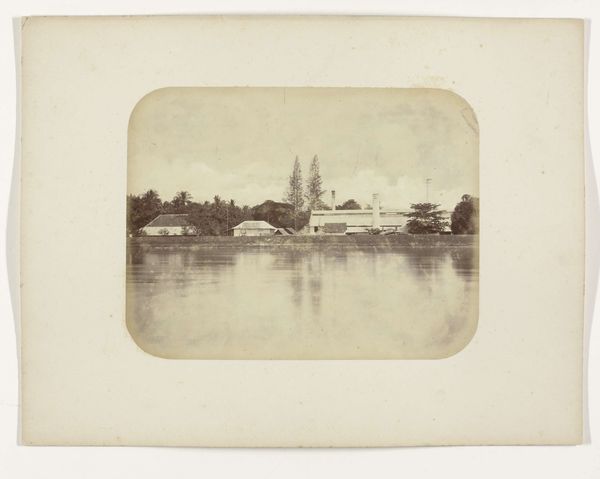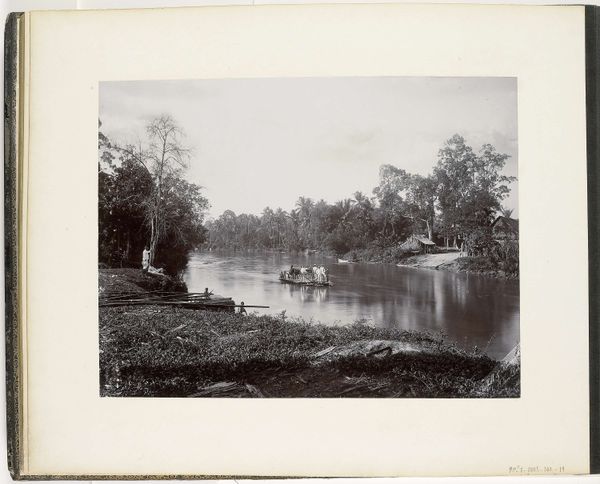
Gezicht op een gebouw waar tabak wordt verzonden van de plantage in Kampong-Bakaru, Sumatra c. 1890 - 1900
0:00
0:00
heinrichernstco
Rijksmuseum
print, photography, albumen-print
#
still-life-photography
#
pale palette
#
muted colour palette
#
natural tone
# print
#
asian-art
#
landscape
#
muted light
#
photography
#
orientalism
#
albumen-print
Dimensions: height 265 mm, width 355 mm
Copyright: Rijks Museum: Open Domain
Curator: What immediately strikes me about this photograph is its quiet stillness, like the world holding its breath. It’s like stepping into a sepia-toned dream. Editor: Exactly. Let's dive in. We're looking at an albumen print, "Gezicht op een gebouw waar tabak wordt verzonden van de plantage in Kampong-Bakaru, Sumatra," taken sometime between 1890 and 1900 by Heinrich Ernst & Co. The image depicts a building where tobacco was shipped, originating from a plantation in Kampong-Bakaru, Sumatra. What meanings and narratives do you see in this seemingly straightforward scene? Curator: Well, on one level, it is quite literal, this shipment of tobacco is more than an export but a symbol. Those slender trees could represent prosperity—almost phallic symbols. Are they fertile with the burgeoning crops? Editor: I love your intuitive reading of the landscape, the trees as emblems of fertility. More literally, tobacco's association with global trade carries a certain historical weight. In many cultures, the plant also symbolized ritual, transformation, and connection to the spirit world. Does its association with a colonial trade dynamic obscure those meanings? Curator: That’s the bitter poetry of it, isn't it? How commodities become so tangled with exploitation, obscuring their deeper, more complex past. Still, there's a balance; in this picture, humanity has not overtaken nature, even if, yes, there is some underlying economic drama, it's gentle, even placid, but only in its external appearance. Editor: The photographer chose an eye-level viewpoint from across the still water; this could speak of both documentation and detachment. What could the artist express using photography? How does it change how the scene is interpreted? Curator: Oh, definitely! Because painting might create grandeur, while a photograph grounds us in reality—even if the scene it portrays has a complex history. Editor: In retrospect, what lasting impression does the picture leave you with? Curator: Melancholy, maybe tinged with hope—like that first spark when light dances on the water’s surface, a sense of nature in its raw grandeur despite humanity's efforts to make a mark. Editor: It makes you question the meaning of paradise, and whether we might already be exiled.
Comments
No comments
Be the first to comment and join the conversation on the ultimate creative platform.
